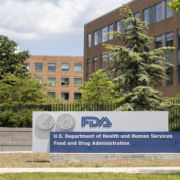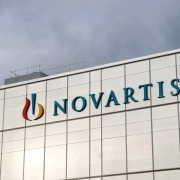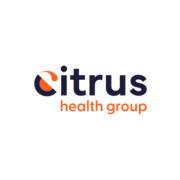Do we have reasonable expectations of gene therapies?
Do we have reasonable expectations of gene therapies?
By Dan Zaksas, Ph.D.
When you hear the phrase “gene therapy,” what comes to mind? A revolutionary cure for an exotic disease? A risky experimental approach that messes with nature? Something in between?
In the middle of the last decade, the popular press yielded a steady stream of sci-fi-worthy speculation about our medical future, with gene therapies squarely in focus. On one side, poorly informed pundits prognosticating the end of humanity as we know it in the throes of genetic manipulation. On the other, hopeful hyperbolists tingling with excitement for miraculous cures just around the corner.
Less than a decade later, healthcare professionals, patients, and rare disease communities are finding themselves in equal parts hopeful, rewarded, impatient — and altogether decidedly in the gray — as they take on the increasingly real world of gene therapies.
The medical miracles
There is not, here, an attempt to dismiss or even diminish the category. In fact, let’s be entirely clear on one point: genetic and cell therapies have, without a doubt, changed the face of health care for the better. They have ushered in the era of personalized medicine and the benefits, at least in certain patients, are undeniable.
More than that, results of gene therapy are awe inspiring. A patient with an inherited retinal disease may go from suffering functional blindness to having sufficient sight for a sunset walk. The parent of a child living with a progressive neuromuscular disorder may see them stay off a ventilator for years past the expected decline. Physicians may find their patients suddenly and joyfully untethered from blood transfusions or symptoms of sickle cell disease or hemophilia. In what otherwise would have been a bleak uncertainty, these are nothing short of medical miracles.
The miraculous mundane
And now, to the great benefit of humankind, the miraculous is becoming the mundane. With every such leap and paradigm shift (ChatGPT, anyone?), we have the responsibility to examine the topic holistically and ground ourselves in the needed wisdom to celebrate the gains, attenuate the drawbacks, and determine the best use of limited resources.
Where do we stand, now, in this transition? The aura of mystique around the idea of gene therapy is beginning to fade as the number and variety of applications, as well as the costs, increase. Five viral gene therapies were approved in the United States between 2017 and 2022. Given the current industry pipeline, this number may triple by the end of 2024.
The next wave of approvals is likely to include CRISPR therapies as well as gene therapies that transcend the current one-and-done injection approach. For example, Krystal Biotech received FDA approval for Vyjuvek (beremagene geperpavec-svdt), an innovative redosable gene therapy gel that, unlike every other marketed molecular therapeutic, is applied topically and does not require expert administration.
The revolution will be regulated
Of course, the evolution of every field of medicine is a delicate dance between innovation and regulation. For the moment, the two are symbiotic when it comes to genetic therapies. Historically cautious on the safety of therapeutic classes that lack long-term data, the FDA, acknowledging pressure from advocacy, is greasing the skids for new gene therapies.
In a keynote to the Muscular Dystrophy Association conference in March 2023, the head of FDA’s Center for Biologics Evaluation and Research, Peter Marks, M.D., Ph.D. made clear that the FDA’s ambition is to increase the availability of gene therapies to rare disease patients in the United States and around the world. Among the discussed approaches was the use of biomarkers and surrogate endpoints to gain accelerated approval. Key to the proposed strategy: acceptance of “some level of uncertainty” in a given therapy’s efficacy or safety. Almost immediately on the heels of this speech, the FDA signaled the likelihood of accelerated approval, on the basis of surrogate measures of micro-dystrophin, for Sarepta Therapeutics’ gene therapy, SRP-9001, in Duchenne muscular dystrophy, albeit age-restricting the eligible patients until an ongoing confirmatory trial can provide evidence of a broader functional benefit.
This apparent green light flies in the face of another trend hitting brands that receive accelerated approval. Last year six different products in oncology that had received accelerated approvals saw market withdrawals because they failed to meet the post-marketing study requirements. The FDA has now provided draft guidance for greater rigor in trial design leading to accelerated approval and has indicated a rising level of scrutiny around ensuring the completion of confirmatory trials.
In this context, overtly encouraging gene therapy sponsors to apply for accelerated approval seems, at face value, to be an internal contradiction. Perhaps it indicates an overarching philosophy of experimentation and a “launch fast, fail fast” approach to therapeutic areas with high unmet need. But there is another likely contributing factor. Rare disease communities have advocated with great fervor for any treatments that provide a glimmer of hope to patients, often children, with genetic disorders. The perceived regulatory leniency for molecular therapeutics may reflect this passion and the tolerance for acceptable uncertainty that was articulated by Dr. Marks of the FDA.
The scales of success
So, let’s consider whether said fervor is justified and whether the efficacy and safety of gene therapies has come close to meeting our early expectations. Of the FDA-approved gene therapies, none are strictly curative, nor are the majority of the products currently in development. Beyond shattering the cure myth, there is the staggering unknown of durability. Several of the approved therapies have accumulated years of demonstrated therapeutic effect, but the popular belief in the permanence of effect is likely misplaced. If target protein expression and treatment efficacy begin to fade due to cellular turnover or immunologic or epigenetic processes, we find ourselves in uncharted and untested waters of repeating costly, invasive procedures or additional therapies.
On the other side of the scales, safety concerns have continued to plague gene therapy clinical trials. Immunogenicity against the viral vectors remains a major concern, as are the potential for overexpression of the target protein and liver toxicity.
We find ourselves at a crossroad, needing a new framework for a gene therapy’s value proposition. If, over the next three to five years, dozens of gene therapies find accelerated approval with varied levels of uncertainty about efficacy and safety, at what point will the level of uncertainty become incompatible with the astronomical costs to the healthcare system?
Early-use cases in Europe have produced some commercial flops. Glybera, approved over a decade ago, was pulled from market having treated only one patient. Strimvelis, an ex-vivo gene therapy for a rare form of immunodeficiency, has had very limited uptake amid an initially convoluted reimbursement scheme on top of a patient death from leukemia attributed to insertional oncogenesis. These particular issues were not expected to generalize to other gene therapies, but doubts crept in.
The cost of value
The value proposition of a therapy rests on the three-legged stool of efficacy, safety, and access, so one can’t escape scrutiny on the latter. We’ve watched over the past decade as insurers have largely picked up the cost of therapies for chronic rare diseases in which annual bills can approach half a million dollars. Most of these diseases affect fewer than 10,000 patients nationwide. Now, gene therapies take costs to another level. Granted, a $1-4MM one-and-done treatment is arguably a significant savings compared to a decade or more of chronic therapy. But how much of the cost can be absorbed by the system when amenable populations begin to number in the hundreds of thousands? And if those hundreds of thousands live with sickle cell disease in sub-Saharan Africa, how do we begin to solve the health equity and access dilemma?
While the actuarial analyses of the gene therapy problem will be resolved, our focus in healthcare communications must be on managing stakeholder expectations. Of particular importance is the education provided to patients, families, and advocates. It’s critical to leverage excitement about the promise of molecular therapeutics to enhance the quality of available information and not to propagate positive misconceptions out of commercial self-interest. We must ensure that the hope we project is commensurate with the evidence, and not applied by transitive property as a class effect. All gene therapies are very much not created equal.
Names, trains, and automobiles
The moniker itself should be revisited. Depending on what you’ve read, CAR-T therapies, ex-vivo and in-vivo gene therapies, and gene editing tools like CRISPR, are often mushed into a category that belies the stark differences in mechanisms, applicability, and safety considerations. Education across all stakeholders should consider avoiding the broad “gene therapy” label in favor of more specific terminology that holds greater relevance to each product’s utility and data set.
Likewise, we must carefully explain the logistical requirements of administration and pre/post care. The calculus of expectations and value proposition needs to include more than the typical efficacy and safety considerations. We know gene therapy administration often requires travel, lengthy hospital stays and monitoring, and invasive surgical procedures. The decision to submit oneself or a loved one to the ordeal is highly personal, and our education efforts must fairly represent the factors contributing to these decisions.
Providers are equally invested in this consideration, given the amount of training, specialized equipment and facilities, and time commitment. They need to have all the facts to consider their recommendations. And their very human expectations, colored by the exuberance of patient advocacy, must be managed with care.
The job is ours, the time is now
Yes, the task before us is difficult, but we are up to it. Moving beyond the museum of early gene therapies ensconced on pedestals of mythical cures is not an indictment; it is a healthy evolution of a dramatically positive shift in our ability to help some of the most desperate and in need.
We in medicine and in healthcare communication, are ready to reconsider the lexicon of the therapeutic category. We are prepared to discuss the tradeoffs of any given genetic product with the same rigor applied to small molecules or more conventional biologics. The time for these conversations is now. The field is expanding so rapidly that current decisions regarding access, equity, and value proposition for gene therapies will shape personalized medical care and healthcare solvency for decades to come. And in doing so, these decisions will lead to an even greater actualization of the original promise — treating the untreatable and curing the incurable with a sense of purpose and responsibility.
 |
Dan Zaksas, Ph.D., is chief medical officer, Fishawack Health. |






 Reuters Health
Reuters Health


